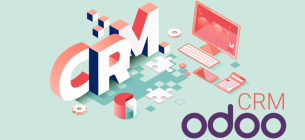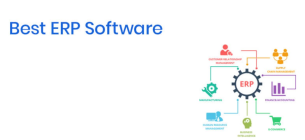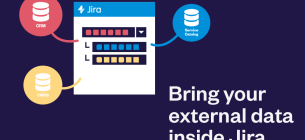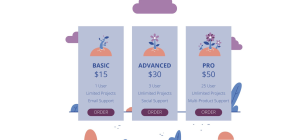When it comes to managing customer relationships effectively, having a reliable CRM system in place is essential. Monday Sales CRM stands out from the crowd with its user-friendly platform, customizable features, and affordable pricing plans. With Monday Sales CRM, businesses can track leads, manage deals, and analyze data all in one centralized hub. The pricing options offered by Monday Sales CRM cater to businesses of all sizes, making it an accessible solution for startups and large corporations alike.
In terms of features, Monday Sales CRM offers a range of tools to streamline sales processes and enhance productivity. From email integration to task automation, users can easily stay organized and focused on achieving their sales targets. Customer reviews of Monday Sales CRM are overwhelmingly positive, with many highlighting its intuitive interface and responsive customer support team. For those considering alternatives to Monday Sales CRM, there are several options available such as Salesforce CRM or HubSpot CRM which offer similar functionality but may come at a higher price point or offer different customization options.
Overall, Monday Sales CRM emerges as a strong contender in the realm of customer relationship management software due to its competitive pricing, robust features, positive reviews from users, and viable alternatives for those seeking different solutions. By choosing a reliable CRM system like Monday Sales CRM, businesses can optimize their sales processes and strengthen relationships with customers for long-term success.
Overview of Monday Sales CRM
Monday Sales CRM is a powerful customer relationship management tool designed to help businesses streamline and optimize their sales processes. This CRM platform offers a wide range of features that enable users to efficiently manage contacts, track leads, and monitor sales activities. With Monday Sales CRM, companies can easily organize and segment their customer data, allowing for personalized communication and targeted marketing campaigns. The user-friendly interface of the platform makes it easy for teams to collaborate and access real-time insights on customer interactions.
One notable feature of Monday Sales CRM is its integration capabilities with other business tools such as email marketing platforms, e-commerce systems, and social media channels. This seamless integration allows for a holistic view of the customer journey and enables automated workflows for increased efficiency. Additionally, the reporting and analytics tools within the CRM provide valuable insights into sales performance metrics, helping businesses make informed decisions to drive revenue growth. Overall, Monday Sales CRM serves as a comprehensive solution for businesses looking to enhance their sales processes and improve customer relationships.
In conclusion, Monday Sales CRM offers a robust set of features that empower businesses to effectively manage their sales operations while fostering stronger relationships with customers. By leveraging this advanced CRM platform's capabilities, organizations can streamline their workflows, increase productivity, and drive revenue growth. With its intuitive interface, seamless integrations with other tools, and powerful reporting functionalities, Monday Sales CRM stands out as a valuable asset for any business seeking to elevate its sales performance in today's competitive market landscape.
Monday Sales CRM is a powerful customer relationship management tool designed to help businesses streamline their sales process and improve customer interactions. With Monday Sales CRM, users can easily track leads, manage contacts, and monitor sales pipelines all in one platform. The intuitive interface makes it easy for sales teams to stay organized and focused on closing deals.
One of the key features of Monday Sales CRM is its customization options, allowing users to tailor the system to fit their specific needs and workflows. From creating custom fields to automating tasks and notifications, Monday Sales CRM offers flexibility and scalability for businesses of all sizes. Overall, Monday Sales CRM is a comprehensive solution for optimizing sales operations and driving revenue growth.
Monday Sales CRM Pricing: Different pricing plans offered by Monday
Monday Sales CRM offers three pricing plans to cater to different business needs and budgets. The Basic plan is priced at $8 per user per month and includes essential features such as contact management, pipeline tracking, and email integration. The Standard plan, priced at $12 per user per month, offers additional features like custom fields, reporting dashboards, and calendar sync. For more advanced requirements, the Pro plan is available at $20 per user per month with features such as automation workflows, advanced reporting, and API access.
Each pricing plan offered by Monday Sales CRM provides a scalable solution for businesses of all sizes. Customers can choose a plan that best fits their requirements and upgrade or downgrade as needed. With transparent pricing and a range of features to choose from, Monday Sales CRM ensures that businesses can efficiently manage their sales processes while staying within their budget constraints.
Monday Sales CRM offers a range of pricing plans to cater to the diverse needs of businesses. The most basic plan is the Standard plan, which provides essential CRM features such as contact management, pipeline tracking, and email integration at an affordable monthly rate. For businesses looking for more advanced functionality, there is the Pro plan that includes additional features like automation, reporting tools, and custom dashboards.
One unique aspect of Monday's pricing structure is their customizable Enterprise plan. This plan allows businesses to tailor their CRM solution to their specific requirements by adding on various modules and integrations at an additional cost. This flexibility makes Monday Sales CRM a great choice for businesses of all sizes, from startups to large corporations. Overall, with its range of pricing options and customizable features, Monday provides a comprehensive CRM solution that can meet the needs of any business looking to streamline their sales processes.
In conclusion, Monday Sales CRM offers a variety of pricing plans designed to suit different budget constraints and business requirements. Whether a small startup or a well-established enterprise, there is a suitable plan available at Monday that can provide the necessary tools for effective sales management and customer relationship building. With its flexibility and customization options, Monday stands out as a versatile CRM platform that can adapt to the evolving needs of businesses in today's competitive market landscape.
Monday Sales CRM Features: Key features of Monday CRM platform
Monday Sales CRM is a versatile platform that offers a range of key features to enhance customer relationship management. One of the standout features of Monday CRM is its customizable pipelines, allowing users to track their leads and deals in a way that suits their specific business needs. This feature enables businesses to visualize their sales process from start to finish, providing insights into where customers are in the pipeline and helping teams stay organized and focused on converting leads.
Another key feature of Monday CRM is the ability to automate repetitive tasks, saving time and improving efficiency for sales teams. With automation tools, users can set up triggers and actions based on specific criteria, such as sending follow-up emails or updating contact information. This not only streamlines workflows but also ensures that no lead falls through the cracks, increasing overall productivity. Additionally, Monday CRM offers robust reporting and analytics capabilities, allowing users to track key metrics and gain valuable insights into their sales performance over time. By analyzing data trends and patterns, businesses can make informed decisions to drive growth and achieve their sales goals effectively.
Monday CRM platform offers a range of key features designed to streamline sales processes and improve team collaboration. One standout feature is the customizable pipeline, which allows users to easily track leads and deals at every stage of the sales cycle. This visual representation helps teams stay organized and focused on closing deals efficiently.
Another valuable feature of Monday CRM is the integration with popular tools like Gmail, Outlook, and Slack, making it easy for sales teams to communicate and share information seamlessly. Additionally, the platform offers automation capabilities that can save time on repetitive tasks, such as sending follow-up emails or updating contact information. Overall, Monday CRM provides a user-friendly interface and robust features that can help sales teams boost productivity and drive revenue growth.
Monday Sales CRM Reviews: Customer reviews and ratings of Monday
Monday Sales CRM has received generally positive reviews from customers, with many praising its user-friendly interface and customizable features. Users appreciate the ability to easily track leads, manage contacts, and collaborate with team members all in one platform. The visual layout of Monday Sales CRM makes it easy to see an overview of sales activities and progress at a glance, helping users stay organized and focused on their goals.
Some users have mentioned that they would like to see more integrations with other tools and software to further streamline their sales processes. Additionally, a few customers have noted that the pricing could be more competitive compared to other CRM options on the market. Overall, Monday Sales CRM seems to be a solid choice for businesses looking for a straightforward and efficient solution for managing their sales pipeline.
As a small business owner, finding the right CRM software is crucial to managing relationships with customers effectively. After researching various options, I came across Monday Sales CRM and was intrigued by the positive customer reviews and ratings it received. Many users praised its user-friendly interface, customizable features, and seamless integration with other business tools. Reading these reviews gave me confidence that Monday could be the solution I was looking for to streamline my sales processes and improve customer interactions.
One review in particular stood out to me, where a user highlighted how Monday's automation capabilities had significantly increased their team's efficiency and productivity. This feedback reassured me that investing in Monday could ultimately lead to tangible results for my own business. Additionally, seeing multiple users mention the exceptional customer support provided by Monday further solidified my decision to give this CRM platform a try. Overall, the overwhelmingly positive reviews of Monday Sales CRM left me excited about the potential impact it could have on my company's operations and bottom line.
In conclusion, reading through customer reviews of Monday Sales CRM reinforced my belief in the power of leveraging technology to enhance business performance. The insights shared by current users not only showcased the various features and benefits of using this CRM software but also highlighted its ability to drive real growth for businesses like mine. Armed with this knowledge from firsthand experiences of others in similar positions as myself, I am now more motivated than ever to implement Monday into my sales strategy and unlock its full potential in improving customer relationships and driving revenue growth.
Monday Sales CRM Alternatives: Comparison with other CRM options
CRM (Customer Relationship Management) systems are essential tools for businesses to manage customer interactions, improve sales processes, and enhance customer satisfaction. Monday Sales CRM is a popular option among many companies due to its user-friendly interface and customizable features. However, there are several alternatives to Monday Sales CRM that offer unique benefits and functionalities. One such alternative is HubSpot CRM, which provides robust marketing automation tools along with CRM capabilities, making it a comprehensive solution for businesses looking to streamline their sales and marketing efforts.
Another notable alternative to Monday Sales CRM is Salesforce CRM, a highly scalable platform known for its advanced analytics and reporting features. While Monday Sales CRM may excel in simplicity and ease of use, Salesforce offers unmatched customization options and integrations with other business tools. Despite these differences, the key factor in choosing the right CRM system lies in understanding the specific needs and goals of your business. By comparing different options like Monday Sales CRM with HubSpot or Salesforce, businesses can make an informed decision based on factors such as budget constraints, required features, scalability, and compatibility with existing software systems. Ultimately, selecting the best CRM solution involves finding a balance between functionality, user experience, and long-term growth potential.
Conclusion
In conclusion, choosing a CRM platform for your sales team is a crucial decision that requires careful consideration of various factors such as pricing, features, reviews, and alternatives. While Monday Sales CRM offers a range of attractive features and functionalities to streamline your sales processes, it's important to also explore alternative options in the market to ensure you find the best fit for your specific business needs. Reading user reviews and testimonials can provide valuable insights into the real-life experiences of other businesses using the CRM platform.
Moreover, pricing plays a significant role in determining the feasibility of integrating a CRM system into your operations. It's essential to not only consider upfront costs but also factor in potential scalability and additional charges as your business expands. By conducting thorough research and comparing different options available, you can make an informed decision that aligns with your budget constraints while maximizing the benefits of implementing a CRM solution for enhanced sales performance.



















